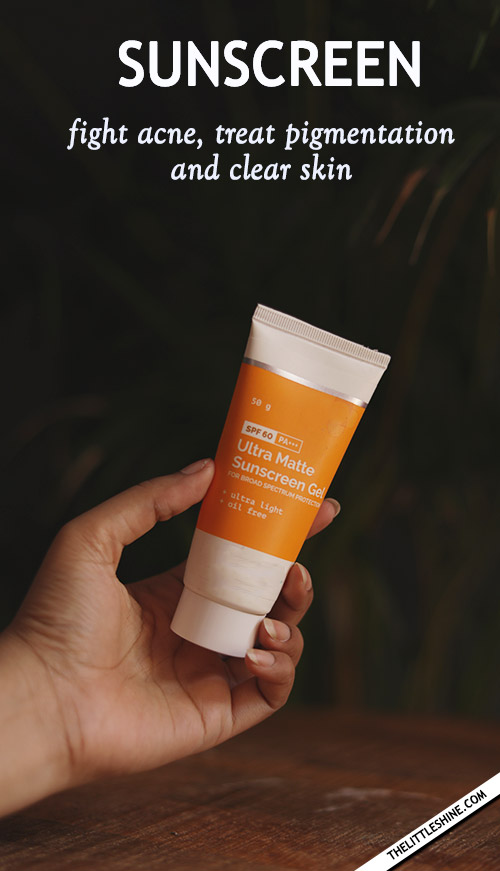Hyper-pigmentation refers to dark patches and spots on the skin. It can be caused as a result of skin injury or acne (also called post-inflammatory hyper-pigmentation), melasma (as a result of hormonal changes), age spots (due to aging pigmentation cells) or freckles (caused by exposure to the sun). Although theoretically, the sun is not the villain in all these hyper-pigmentation conditions, sunscreen is still very important to prevent and treat scars and spots as the sun has a major role to play. Wondering why sunscreen acts as a holy grail in your anti-marks skincare regime? Check out the details here:

ROLE OF SUN EXPOSURE IN HYPER-PIGMENTATION
- UV rays cause tanning of skin by inducing the production of melanin and its redistribution
- UV rays promote skin aging by affecting skin cells that include the cells that manufacture melanin.
Thus, exposure to sun tends to cause severe sun damage and aggravate post-inflammatory hyper-pigmentation, intensify melasma and multiply age spots at a faster rate. So, all kinds of hyper-pigmentation are influenced and affected by the sun, which is why, sunscreen is perhaps one of the best skin care ingredients to get rid of scars and spots. READ MORE – Vitamin C – a magic wand for clear, bright, and flawless skin
HOW DOES SUN PROTECTION FACTOR HELP PREVENT HYPER-PIGMENTATION?
Sunscreen comes in various forms like liquids, creams, gels, lotions, powder and sprays that function as follows:
- It prevents UV rays from reaching and affecting your skin directly.
- It reduces the intensity of the UV light and dampens its effect.
Mainly there are three kinds of sunblock that you can use-
1. Physical Sunscreen– Also known as ‘mineral sunscreen’, it has inorganic UV filters or physical blockers like Zinc Oxide and Titanium Dioxide for reflecting, scattering, and blocking the sun rays before they penetrate and damage the skin. Physical sunscreen is safe with less probability of irritating the skin while offering broad-spectrum protection. Thus it helps with tanning and dark patches effectively.
2. Chemical Sunscreen– Sometimes referred to an ‘organic sunscreen’, chemical sunscreen contains chemical compounds like octinoxate, avobenzone, oxybenzone and octisalate to absorb the harmful UV rays. This kind of sunscreen is ideal for regular use.
3. Tinted Sunscreen– A tinted sunscreens are a combination of broad-spectrum mineral UV filters, like zinc oxide titanium dioxide, and also iron oxide. Tinted sunscreens are proven to reduce melasma, fade pigmentation and are also effective at blocking the blue light. READ MORE – Top 5 hair oils to stop hair fall and grow thicker hair
BENEFITS OF USING SUNSCREEN TO TREAT SCARS AND SPOTS
- Using sunscreen serves as a preventive measure and protects the skin from tanning, discoloration and uneven complexion.
- It renders the direct rays of the sun less intense and so, the existing marks on the skin fade far more easily. This in turn will make the other skin care products for treating pigmentation function more efficiently.
- For skin affected by acne, it is important to combine the use of the right kind of skin care ingredients like retinol and vitamin C along with sunscreen. As you initiate the healing process and new layer of skin resurfaces, the sunscreen will prevent the tender skin from damages. This in turn will help heal marks and blemishes faster.
